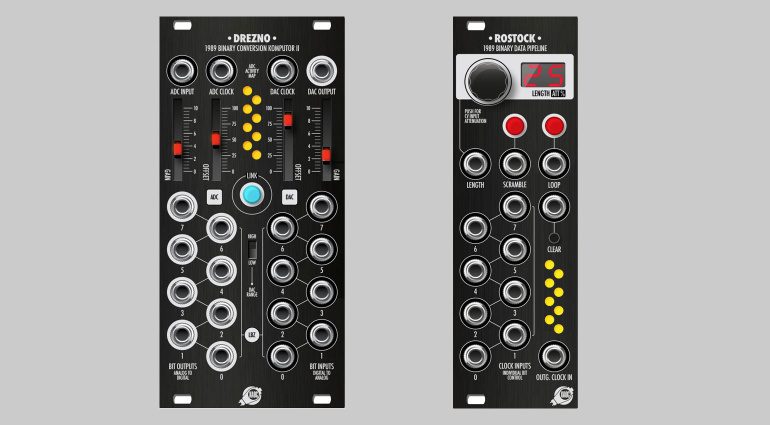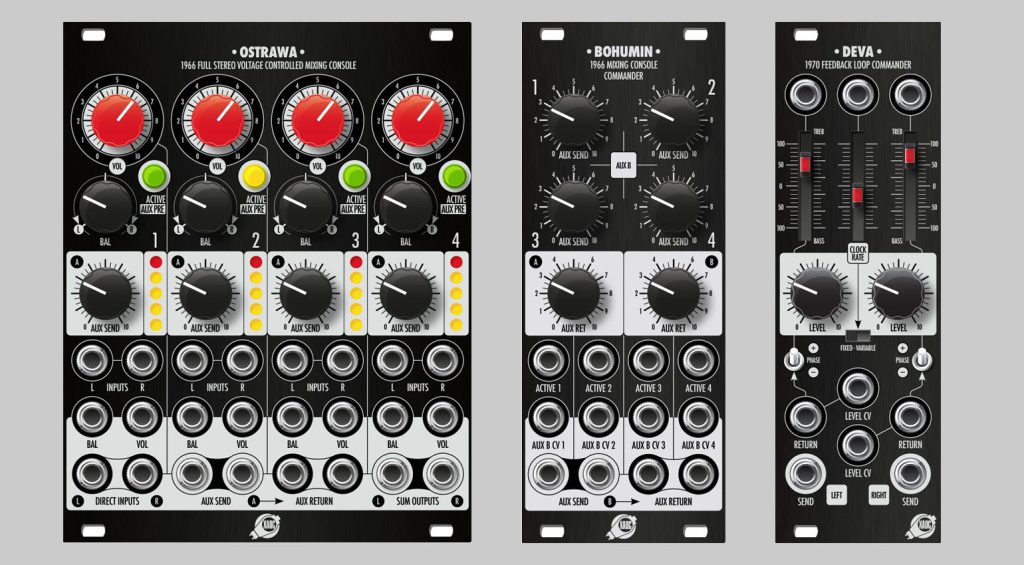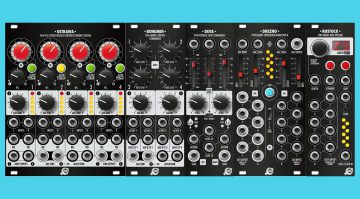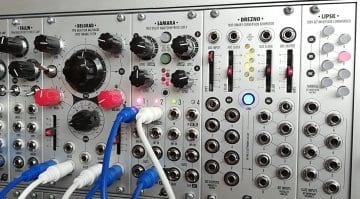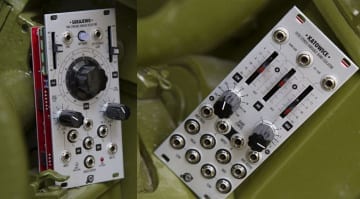Superbooth 23: XAOC introduces five new modules
XAOC will show Rostock, Drezno II, Bohumin, Ostrawa and Deva for binary manipulation, mixing and feedback loops.
These modules can get very deep very quickly and sometimes appear to have a language all to themselves. But here’s a rough summary of what these new modules have to offer.
Ostrawa – 1966 Full Stereo Voltage Controlled Mixing Console
This is one impressive-looking module and very similar to the Praga module. However, this time it’s for stereo channels. Ostrawa has four channels of stereo mixing with full voltage control. You have one send stereo send and return, clickless muting, balance controls and individual metering.
Ostrawa is expandable by using multiple units chained together along with the mono-channel Praga module.
Bohumin – 1966 Mixing Console Commander
Speaking of expanders, the Bohumin can add a second auxiliary bus to the Ostrawa with voltage control over the send amount for each channel.
Deva
This is an expander for the Timiszoara multi-fx module. It brings additional pathways into the nastier side of the effects parameters. There are two feedback loops with tilt filters and switchable feedback polarity. There’s also a DAC clock control for over or under-clocking.
Rostock – 1989 Binary Data Pipeline
It’s part of the Leibniz Binary Subsystem, a group of 8-bit signal processing devices for digital signal manipulation. It started with the Drezno and Lipsk modules, and now we have the Drezno II (below) and the Rostock.
Rostock is a first-in-first-out shift register which is similar to a BBD delay except that it’s digital. It processes other Leibniz modules via a ribbon connected at the back. It can delay memory of up to 64 stages with looping, scrambling, and voltage-controlled length.
Drezno II – 1989 Binary Conversion Komputor
This is an improved version of the original founding module of the Leibniz Binary Subsystem. It arranges signals as 8 bits of digital data and can represent any Eurorack signal. It’s Drezno that provides the front end to Leibniz by having the analogue-to-digital conversion necessary to pull digital data from analogue signals.
The new version has a much higher resolution and switchable calibrated range.
Maybe one day, someone will sit me down and explain it all to me.
 4,5 / 5,0 |
4,5 / 5,0 | 

